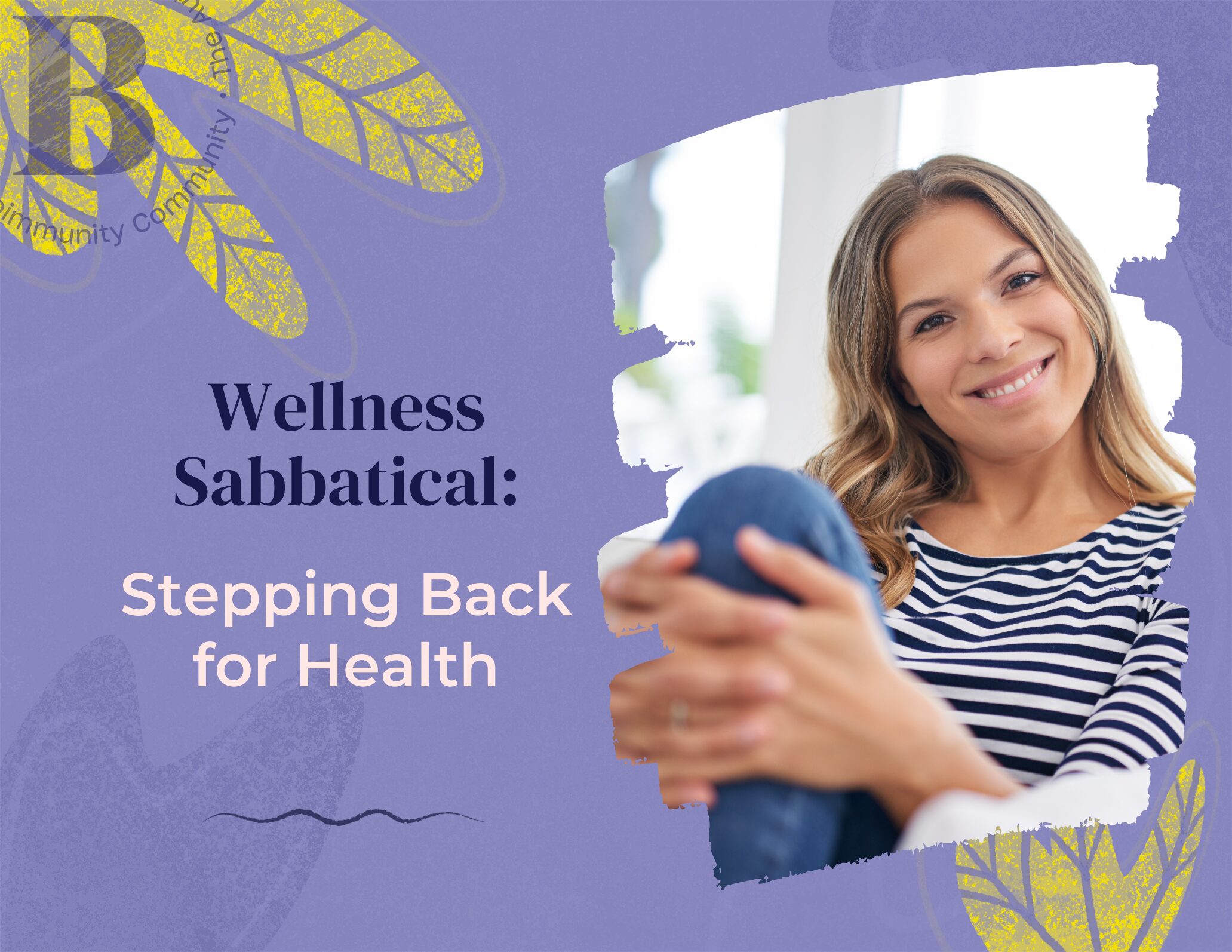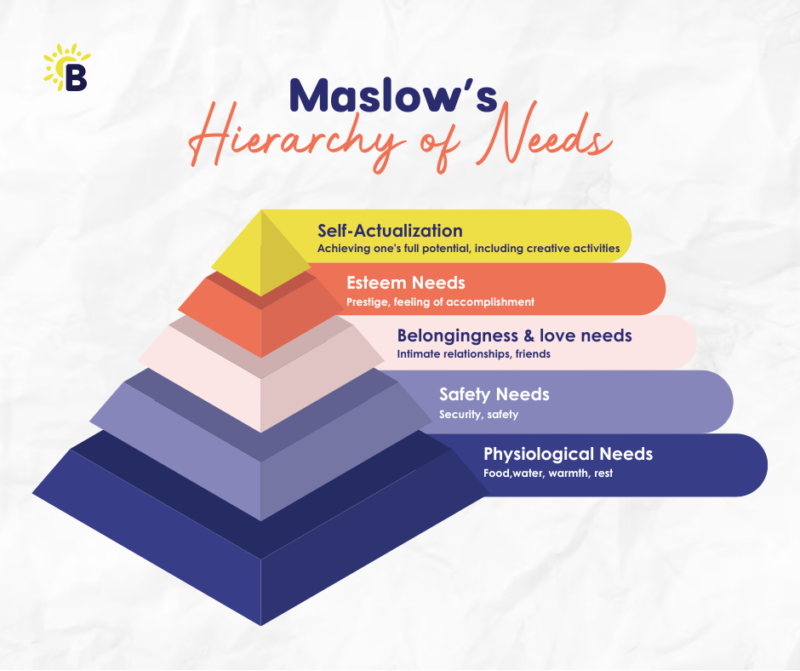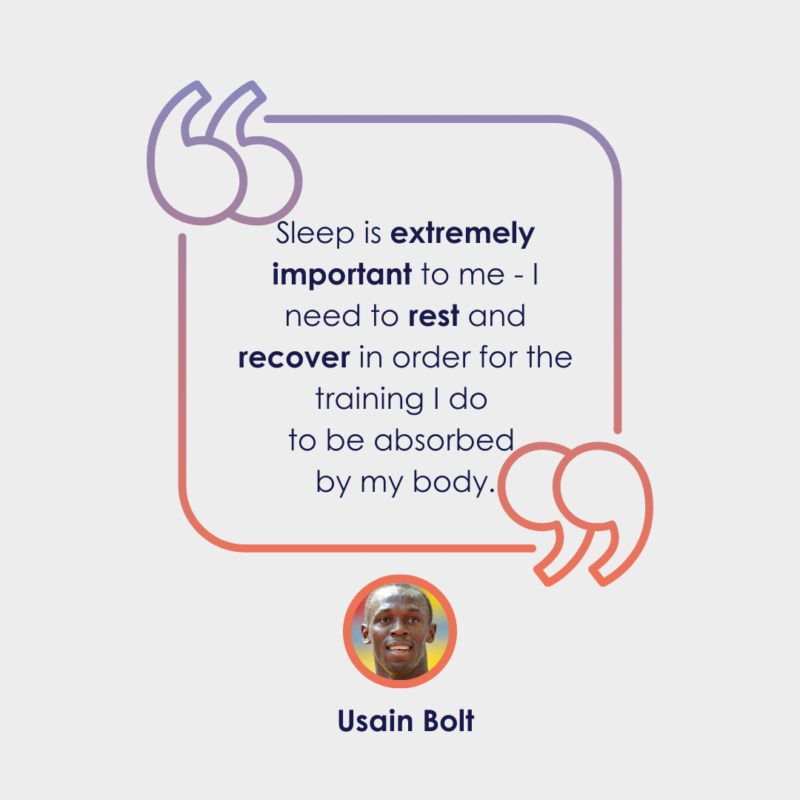
Wellness Sabbatical: Stepping Back for Health
In our fast-paced world, taking time off for our well-being has become more important than ever. Sadly, many people associate rest with unproductivity, believing that stepping away from work means falling behind. However, the concept of a wellness sabbatical challenges this notion by showing that taking a break can actually enhance productivity and overall well-being.
Gaining isn’t always about adding more tasks or responsibilities; sometimes, it’s about the benefit of unloading pressures and giving yourself permission to rest. By stepping back and allowing your body and mind to recuperate, you can prevent the detrimental effects of chronic stress and burnout. This approach helps you return to your responsibilities with renewed energy, clarity, and efficiency, ultimately enhancing your productivity and well-being.
Join us as we go through everything there is to know about this beneficial practice, especially for us dealing with autoimmune challenges.
What is a Wellness Sabbatical?
A wellness sabbatical is a break from your usual routine, designed to focus on your physical, mental, and emotional health through activities like yoga, meditation, healthy eating, and other wellness practices.
It’s not just about relaxation but also about making long-term lifestyle changes.
Similar concepts include wellness retreats, which are shorter organized getaways focused on health activities; health breaks, which are shorter periods dedicated to health; and digital detoxes, which involve refraining from electronic devices to reduce stress and improve well-being.
Why Take a Wellness Sabbatical?
In today’s busy world, stress is a constant companion, and for those of us with a tag-along known as autoimmunity, it can be particularly damaging.
A wellness sabbatical offers a structured way to step back, reset, and take care of ourselves.
It helps reduce stress, which can worsen inflammation and autoimmune symptoms, and improve health through activities like exercise and healthy eating, boosting the immune system.
A sabbatical also provides mental clarity, helping you return to daily life with a fresh perspective, and prevents burnout, ensuring you remain productive and happy in the long run.
Signs that you might need a wellness sabbatical include feeling constantly tired and stressed, decreased productivity and motivation, physical symptoms like headaches or insomnia, and emotional signs such as anxiety, irritability, or feeling overwhelmed.
Despite these, many people put off the idea of taking a break for their health because of the stigma of unproductivity.
Overcoming the Stigma of Unproductivity
Many people with autoimmune or otherwise fear that taking a break will make them seem unproductive, but the opposite is true. This stigma overlooks the vital signals our bodies send us. When we feel constantly tired, stressed, or experience physical symptoms like headaches or insomnia, our bodies are telling us that we need to take care of ourselves.
A wellness sabbatical allows us to listen to these signals, prioritize our health, and ultimately return to our daily routines more refreshed, focused, and productive.
By honoring these signs, we can manage our autoimmune health better, reduce stress, and promote overall well-being.
Why We Need to Take a Break and Let Go of Guilt
Nowadays, the human need for rest and recovery is often overlooked, if not frowned upon. Ironically, our bodies and minds require downtime to function optimally, especially for those managing autoimmune conditions. Therefore, rest is not a luxury but a necessity for maintaining health and productivity.

Maslow’s hierarchy of needs places physiological needs, including rest, at the very base of the pyramid. This foundational level underscores the importance of rest for our overall well-being and survival. Without adequate rest, it becomes challenging to achieve higher levels of psychological and self-fulfillment needs, such as self-esteem and self-actualization.
Scientifically, rest is crucial for our bodies to repair tissues, build muscle, and strengthen the immune system. For the mind, sleep and rest are essential for cognitive functions like memory consolidation, problem-solving, and emotional regulation.
Moreover, rest plays a vital role in neuroplasticity, the brain’s ability to reorganize itself by forming new neural connections. This ability is essential for learning, adapting to new experiences, and recovering from injuries. Adequate rest enhances neuroplasticity, which in turn supports the body’s natural healing powers and overall resilience.
Despite this, many people feel guilty about taking time off, often driven by societal or internal pressures and the misconception that constant busyness equals success. Wrong! In fact, pushing ourselves without breaks can lead to burnout, decreased productivity, and worsened health.
Consider athletes, who understand the discipline of taking rest for recovery. Sure, they get paid to rest, but that’s because they’ve got it figured out! They know that rest days are just as crucial as training days for improving performance and preventing injury. Similarly, for those of us with autoimmune conditions, taking regular breaks is vital for managing symptoms and maintaining overall health.

Interestingly, we can also draw inspiration from other cultures that prioritize rest and wellness. In Spain, the tradition of siestas highlights the value of afternoon rest. Similarly, sabbaticals are common in academia and some professions, allowing individuals to recharge and pursue personal growth. In Japan, “Shinrin-yoku” or forest bathing encourages immersion in nature for mental and physical health benefits. And did you know that Scandinavian countries embrace “Friluftsliv,” the concept of open-air life, to connect with nature and rejuvenate? And last, Indian Ayurvedic retreats focus on holistic wellness practices that promote balance and health.
Just as athletes use rest to come back stronger and more resilient, we too, can benefit from the rejuvenation that comes with appropriate rest periods. So, take a page from their playbook and remember: even champions need a break!
So, how long should a Wellness Sabbatical be?
Well, it really depends on what you’re needing and your specific situation. Let’s dive into it:
Short-term: A Few Days to a Week
Do you need a quick reset to recharge your batteries? A short-term sabbatical might be perfect for you– it’s long enough to escape the daily grind but short enough to fit into a busy schedule.
Medium-term: One to Two Weeks
Thinking about a more immersive experience? A medium-term sabbatical allows you to dive deeper into wellness activities and start forming new habits. This length offers a balance between relaxation and the opportunity for meaningful change.
Long-term: Several Weeks to a Few Months
Dreaming of a complete overhaul? A long-term sabbatical provides ample time to focus on significant lifestyle changes and deeply address your wellness goals. This is ideal if you can manage a more extended break from your routine.
Factors Influencing the Length of Your Sabbatical
1. Personal Needs:
- What are you hoping to achieve?
- Are you looking for a quick stress reliever or a substantial life transformation?
2. Work Situation
- Can you take a longer break from work, or do you need to keep it short and sweet? Discuss options with your employer.
3. Financial Considerations:
- What can you afford?
- A longer sabbatical might require more financial planning, but there are ways to make it work on a budget.
By considering these factors, you can tailor your wellness sabbatical to fit your life perfectly. Whether it’s a few days or a few months, the goal is to prioritize your health and well-being in a way that feels right for you.
Ideas and Planning Your Wellness Sabbatical
Taking a wellness sabbatical is a fantastic way to rejuvenate your mind, body, and spirit. You can spend this time at mindfulness and meditation retreats, spa getaways, nature trips, or by enrolling in personal development courses. Volunteering and engaging in community service can also be fulfilling, as well as taking a digital detox to reduce stress.
To make the most of your sabbatical:
- set clear intentions and goals;
- create a budget;
- research and book your accommodations and activities; and
- prepare for your absence at work by delegating tasks and informing colleagues.
The whole idea of stepping away from life’s busyness, especially on an extended one, can be daunting, we know! But life isn’t just about constant hustle because our bodies aren’t made to be in overdrive mode all the time. By blending the inspiration from various cultural practices, understanding the science behind rest, and planning your steps carefully, you can craft a rejuvenating and enriching wellness sabbatical that supports your long-term well-being.
Communicating Your Need for a Wellness Sabbatical
Taking a wellness sabbatical is a game-changer for your health. But let’s be real—telling everyone you need time off for some serious self-care can feel like announcing you’re leaving to join a llama yoga retreat. So, how do you pitch this idea without sounding like you’re just after a fancy nap?
Here are some tips to help you talk to your employer, clients, family, and friends about your plans, and how to set boundaries and expectations during your sabbatical.
Talking to Your Employer or Clients
- Prepare Your Case: Think of this like prepping for a big game or a Netflix pitch—gather all the juicy data. Show how a wellness sabbatical can turbocharge your productivity, boost your health, and make you an even better version of yourself for the team.
- Choose the Right Time: Timing is everything. Wait for a moment when your boss or clients aren’t running around like headless chickens. Find a calm, private spot—maybe over a cup of coffee—where you can have a heart-to-heart.
- Be Transparent and Honest: Be as clear as a bell. Explain why you need this break, especially if it’s for managing an autoimmune condition or just to keep your sanity. Stress that this is a proactive step to stay sharp and effective, not a sign you’re jumping ship.
- Present a Plan: Come with a game plan. Detail how you’ll handle your responsibilities before and during your absence. Think of it like setting your DVR to record all your favorite shows while you’re away—you’ve got everything covered.
- Reassure Continuity: Promise them the show will go on. Assure your boss or clients that everything will run smoothly and you’ll be back, recharged and ready to rock. Highlight your commitment to a seamless transition and continued excellence upon your return.
Discussing Your Wellness Sabbatical Plans with Family and Friends
Be Open About Your Needs: Lay it all out there. Tell your family and friends why you need this wellness sabbatical and how it will boost your health and well-being. Sharing your reasons helps them understand the importance of this time for you.
Seek Support: Ask for their support and understanding during your sabbatical. Let them know specific ways they can help you make the most of this time. Whether it’s checking in or giving you space, their support can make a big difference.
Set Expectations: Be clear about what you will and won’t be available for during your sabbatical. This sets the stage for managing their expectations and avoids any misunderstandings. It’s all about keeping everyone on the same page.
Setting Boundaries and Expectations for Your Sabbatical Period
Establish Clear Boundaries: Define what your sabbatical boundaries look like. Maybe it’s limited access to work emails or cutting down on social obligations. Whatever they may be, communicate these boundaries to your employer, clients, family, and friends so everyone knows the deal.
Create a Schedule: Plan your wellness activities and stick to that schedule. Prioritize your rest and healing just like you would any important meeting! And as with everything, having a plan helps you make the most of your sabbatical and keeps you focused on your well-being.
Stay Committed: Treat your wellness sabbatical as a key part of your health routine. Don’t let guilt or external pressures pull you back into your old habits too soon. Stay committed to your time off. You owe yourself this much!
Regular Updates: If needed, give periodic updates to your employer or clients to reassure them of your commitment and keep them informed about your return. It’s a simple way to keep everyone in the loop and reduce any anxiety about your absence.
By communicating your need for a wellness sabbatical and setting clear boundaries, you ensure your time off is respected and beneficial. Remember, taking this step is a proactive approach to boosting your health and productivity. So go ahead, embrace the break—you’ve earned it!
Returning to Responsibilities After Your Wellness Sabbatical
1. Ease Back In
Transition gradually by prioritizing tasks and setting realistic goals for your first week back. This maintains the calm and balance from your sabbatical and prevents feeling overwhelmed.
2. Keep Up New Habits
Continue the new habits you developed, like daily meditation, a balanced diet, or regular exercise. It’s no secret that these small changes lay the foundation to improving your overall well-being.
3. Balance to Avoid Burnout
Maintain a balance between work and personal time. Schedule regular breaks and set boundaries to prevent work from encroaching on your personal time. This helps avoid burnout and keeps you in optimal condition.
Sustain the positive changes and prioritize your well-being as you return to daily life. You’ve got this!
Embrace the Power of Rest
Taking a wellness sabbatical is not just a break from your routine; it’s a powerful investment in your health and productivity.
By understanding the importance of rest, inspired by practices from around the world, and supported by science, you can transform your life.
Embrace the lessons learned, gradually reintegrate, and maintain the balance to prevent burnout. Your body and mind will thank you, and you’ll return stronger, more resilient, and ready to take on the world.

Joining a community like BrightlyThrive can make this decision even more impactful in your health journey. Being part of a supportive network can provide you with the encouragement, resources, and shared experiences you need to succeed. Become a member today and download the BrightlyThrive App to be part of this movement in reimagining autoimmunity together. Prioritize your well-being—because you deserve it.
Resources
How Resting More Can Boost Your Productivity. (n.d.). Greater Good. https://greatergood.berkeley.edu/article/item/how_resting_more_can_boost_your_productivity
Take steps to prevent or reverse stress-related health problems. (2017, February 14). Harvard Health.
Fluker, D. (2023, March 12). Burned Out? It’s Time For A Wellness Sabbatical. Here’s Why You Should Take Time Away From Work And Life. Essence.
Stress. (2022, June 17). https://www.who.int/news-room/questions-and-answers/item/stress
Penrod, E. (2024, May 7). Why Downtime Is So Good for Health and Well-Being. EverydayHealth.com.
Nursing, O. R. F., Ernstmeyer, K., & Christman, E. (2021). Chapter 12 Sleep and Rest. Nursing Fundamentals – NCBI Bookshelf.
Vyazovskiy, V. (2015, December). Sleep, recovery, and metaregulation: explaining the benefits of sleep. Nature and Science of Sleep, 171.
MSEd, K. C. (2024, May 17). How Neuroplasticity Works. Verywell Mind.
Bennett, T. (2022, July 20). Why do I feel guilty taking time off work? How can I fix this? Thriveworks.
Ansorge, R. (2022, February 7). Rest and recovery are critical for an athlete’s physiological and psychological well-being. UCHealth.
(2024, April 26). Siesta in Spain: the cultural icon that stops commerce – Mama Málaga. Mama Málaga.
Ioppolo, B., & Wooding, S. (2023, March 14). How academic sabbaticals are used and how they contribute to research – a small-scale study of the University of Cambridge using interviews and analysis of administrative data. F1000Research, 11, 36.
Li, Q. (2022). Effects of forest environment (Shinrin-yoku/Forest bathing) on health promotion and disease prevention —the Establishment of “Forest Medicine”—. Environmental Health and Preventive Medicine, 27(0), 43–43.
Smith, J. R. (2020, September 11). What is ‘friluftsliv’? How an idea of outdoor living could help us this winter. Culture.
Team, I. C. (2023, December 22). Ayurvedic Wellness Retreats In India: Balancing Body And Soul – Indian Culture. Indian Culture.
The Wellness Sabbatical | Global Wellness Trends. (2020, March 19). Global Wellness Summit.
Peavey, E. (2021, December 31). The work of rest: Investing in yourself with a sabbatical. Psychology Today.
Abrams, S. (2020, December 16). 6 Inspiring Perspective Shifts From My Wellness Sabbatical (Week 1 of 3). Thrive Global.
Sharma, D. (2024, May 4). Learning Sabbaticals – Taking Breaks to Focus on Growth – Risely. Risely.
Why companies must prioritize wellness in the workplace. (2021, October 18). World Economic Forum.
Gillette, H. (2021, June 5). 7 Tips for Setting Work Boundaries for Yourself and with Others. Psych Central.
TAGS:
CATEGORIES:






